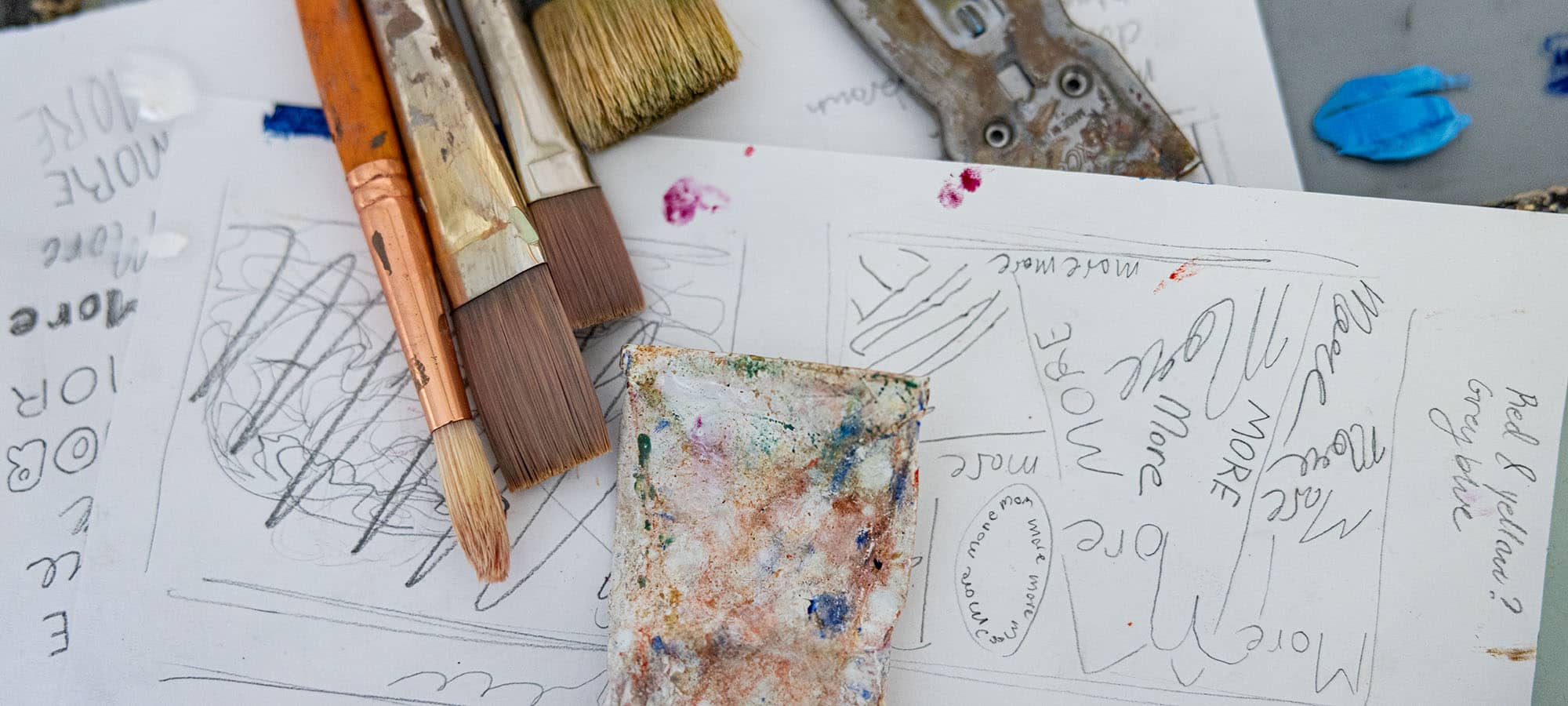
Art in the Natural State
Arkansas native Marty Maxwell Lane grew up knowing she wanted to be a designer, but she also knew she needed to leave the state to pursue her degree because there wasn’t a fully accredited B.F.A. graphic design program offered at home.
Today, though, as director of the University of Arkansas School of Art in the Fulbright College of Arts and Sciences, she and other faculty members are building something beautiful for students – like herself – who are drawn to art and design. They’re increasing access to art education in Arkansas while leading the first and only accredited, collegiate school of art in the state.

Photo courtesy of Novo Studio.
History...in the Making
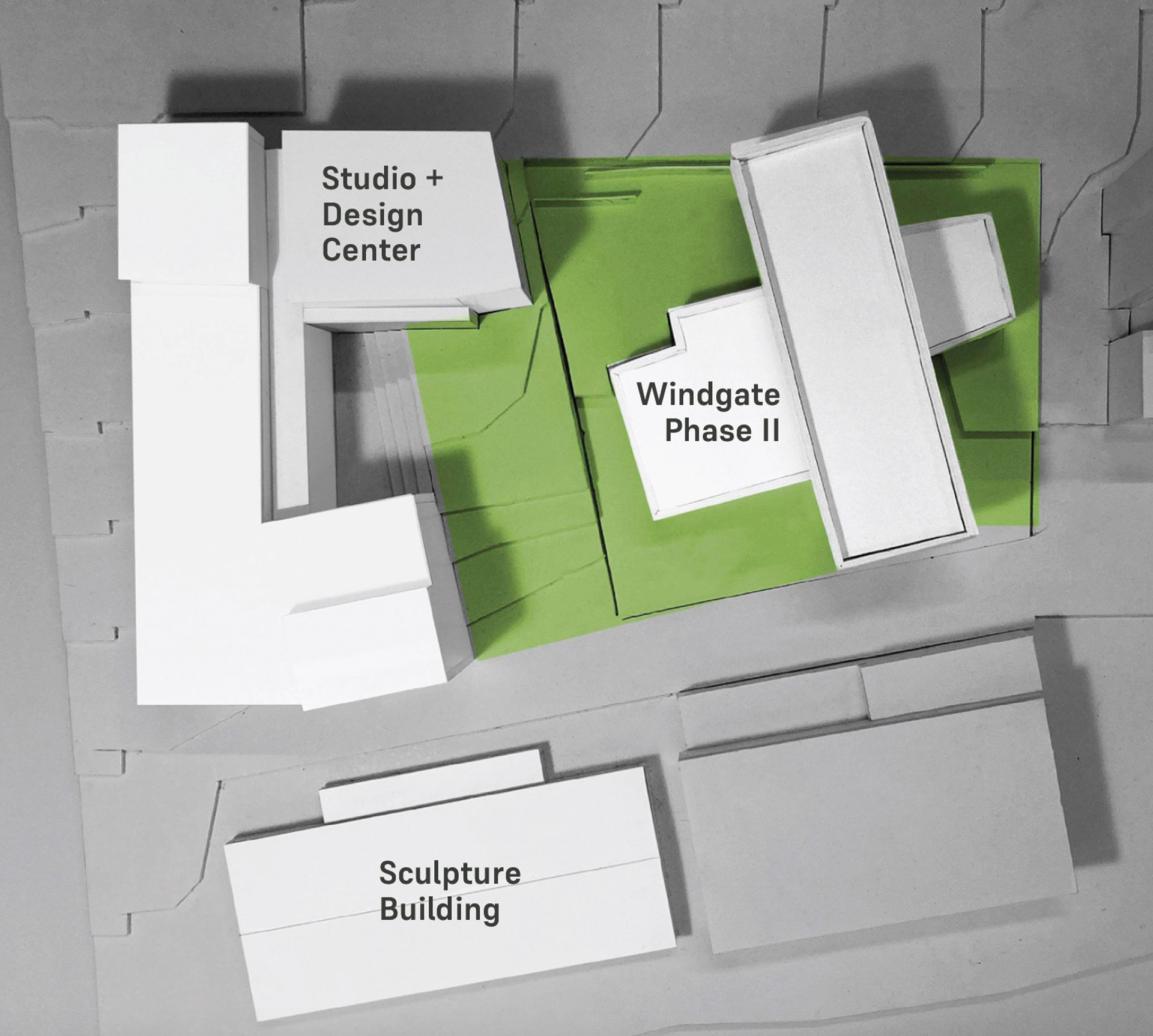
There’s a lot of excitement surrounding the School of Art, which was established in 2017 thanks to an unprecedented $120 million gift from the Walton Family Charitable Support Foundation. History was made, as it was the largest gift ever given to a U.S. university to support or establish a school of art.
Maxwell Lane said the gift was “monumental” for art and created energy – an energy that is still building years later.
But the momentum didn’t stop there. A $40 million gift – also in 2017 – from the Windgate Charitable Support Foundation provided a new base for the burgeoning program, a new state- of-the-art facility bringing art, design and education together and establishing the Windgate Art and Design District in the heart of south Fayetteville. The district expands on the School of Art’s Hill Avenue sculpture complex that opened in 2016.
This gift was followed with an additional $30 million partial challenge grant from the foundation in 2021 to support a second phase and expansion of the district. With these new facilities, the Windgate Art and Design District will offer a creative space for students, faculty and community, while also transforming arts education in the state.
The Studio and Design Center – phase one of the district expansion – houses the studio art program areas in ceramics, drawing, painting, photography, printmaking and M.F.A. and B.F.A. studios, as well as the graphic design program and new graduate M.Des. degree. In addition, the building features a design clinic offering collaboration with community partners, a print lab and a coffee bar serving students, faculty and the community. In essence, it’s reuniting programs and students that have been spread across 12 different locations on and around the U of A campus and Fayetteville community.
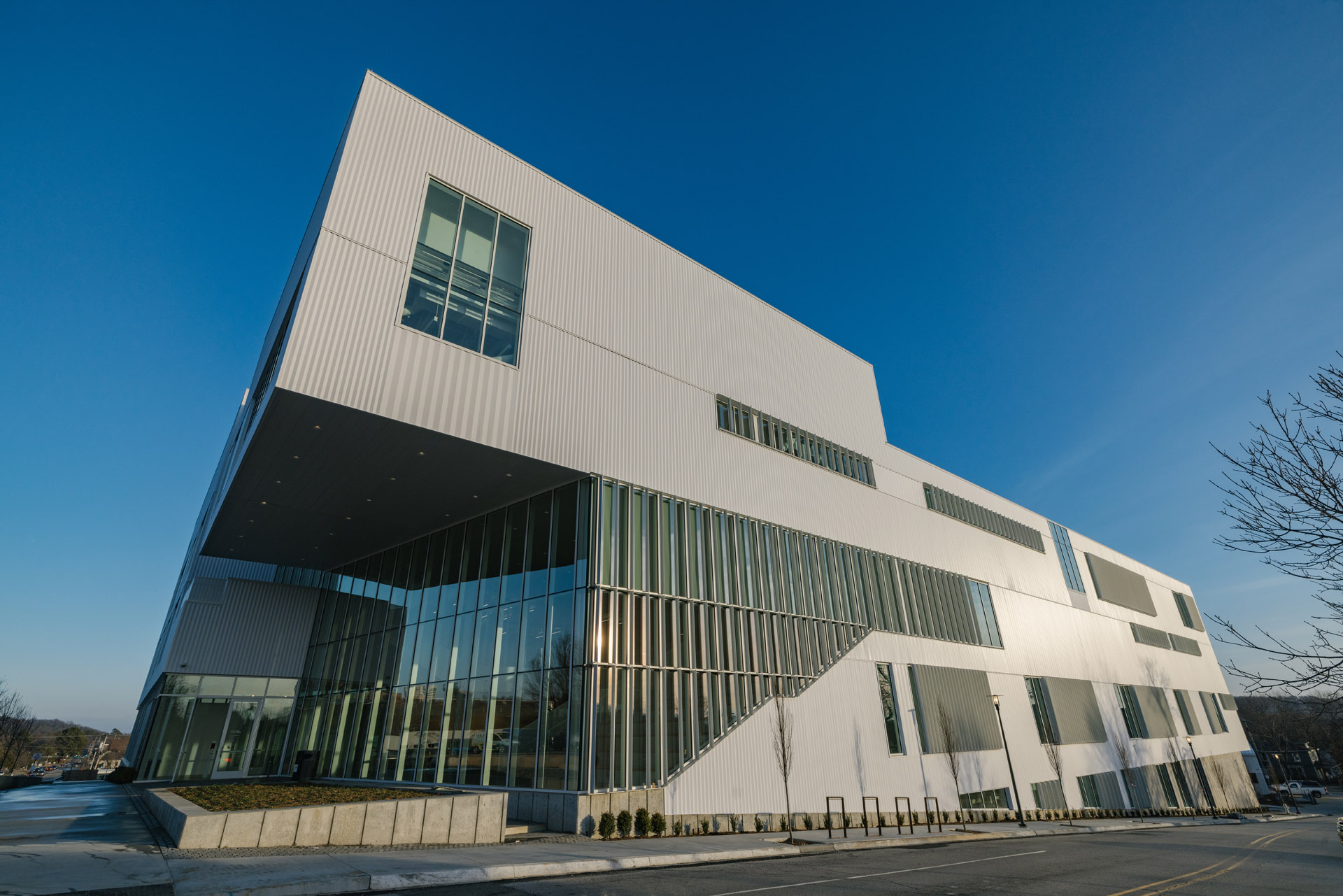
Photo courtesy of Novo Studio.
Phase two will add another 58,000-square-feet to the district through the Gallery and Foundations Building. This facility will be situated adjacent to the new Studio and Design Center and Sculpture facility and house the school’s public galleries, the first-year foundations program, Idea Fabrication Lab, Arts and Entrepreneurship Workshop, a 250-seat auditorium, and faculty and visiting artist studios.
The existing Fine Arts Center on campus, designed by the renowned architect Edward Durell Stone, was the first academic building in the nation to combine the arts within a single connected building, from theatre, dance and music to art and architecture. It opened in 1950.”
Creatively Collaborative
Increased square footage also brings the potential for increased collaboration.
The 154,000-square-foot-state-of-the-art Studio and Design Center brings media disciplines together and invites the community into the space simply through vast windows lining M.L.K. Jr. Boulevard, open floor plans, courtyards and terraces.
“We are excited about new collaboration opportunities with community partners and organizations, but also with our faculty and students,” Maxwell Lane said. “There’s a lot of openness between floors that I think will help us break out of some media silos that have been built due to our physical space, and I’m excited about that.”

Photos courtesy of Novo Studio.
A design clinic is integrated into the facility – a space specifically designed to allow for long- term community collaborations and allow bridges to be built between faculty and students outside of the classroom.
An example of the potential for this space is Maxwell Lane’s own collaboration with the Arkansas Coalition of Marshallese. What started as a classroom collaboration in her human- centered design class has expanded, yet – until now – she hasn’t had the space for additional work. Maxwell Lane is excited about the future possibilities.
In her 2016 class, eight teams took on project topics situated in the legal context and created innovative design solutions to help both the Marshallese and all who interact with them better understand one another and break down barriers of communication.
“Human-centered design has the ability to tackle the world’s messy problems by designing ‘with’ people rather than ‘for’ people,” Maxwell Lane said.
Difference-Making, by Design
Olivia Dyer, a studio art major from Mountain Home, earned her first bachelor’s degree from the university – in public health – in 2018. But she re-enrolled in early 2021 after realizing she loved art and wanted to combine that love with helping others.
Like Maxwell Lane, Dyer truly believes art can make a difference in peoples’ lives. She’s seen it firsthand as a volunteer with local children’s shelters. She even worked with therapists at the Children’s Safety Center in Northwest Arkansas on a collaborative art therapy class one summer.
Ultimately, Dyer plans to enroll in a graduate program in art therapy and counseling. And while the School of Art doesn’t currently have art therapy as a focus, the faculty and staff have found ways to help her build her own path, nonetheless.
“In November 2022, the school funded an opportunity for me to go to a national art therapy conference,” she said. “It really opened my eyes to art therapy and allowed me to network with faculty where I’ll be applying to grad school.”
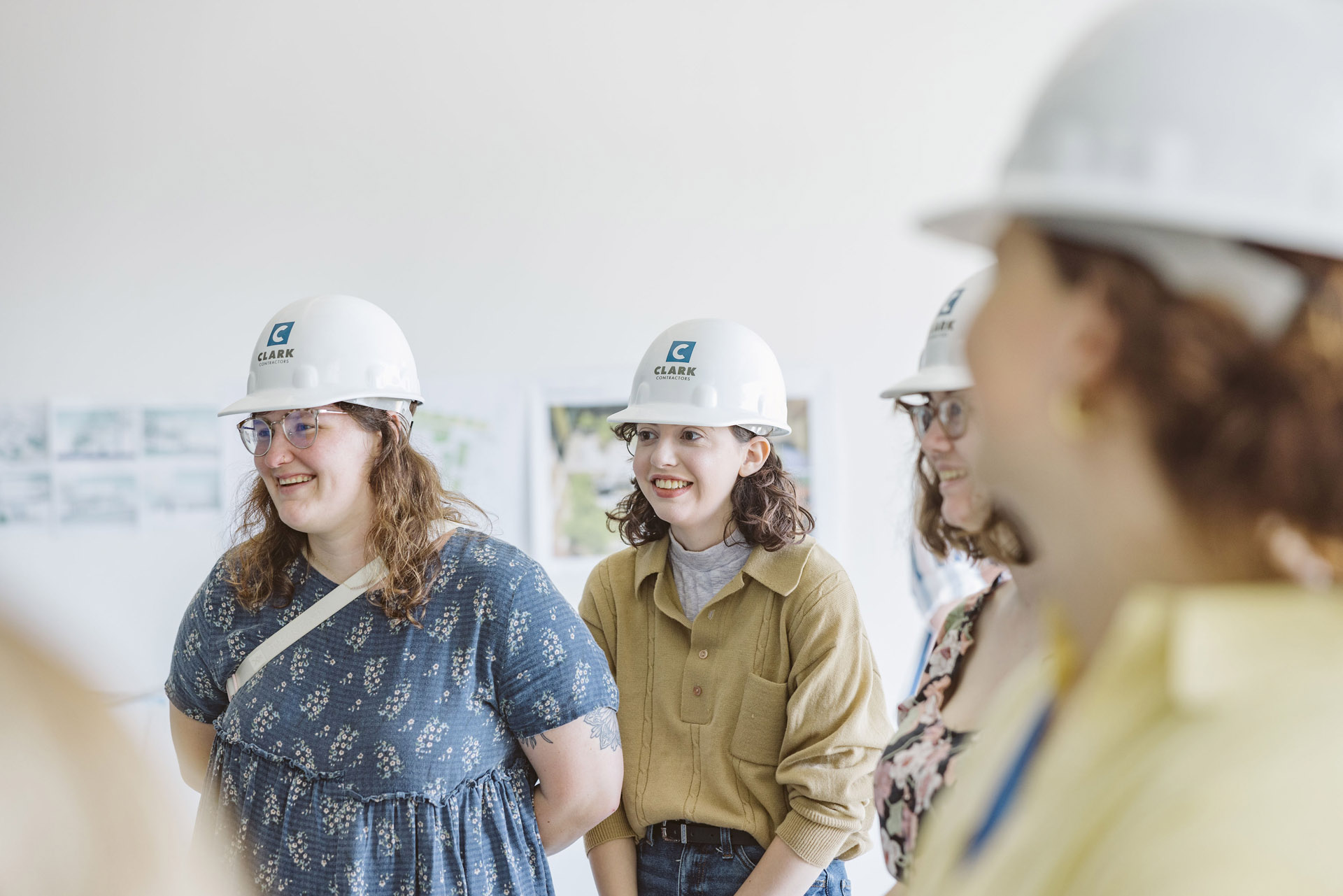
Photos courtesy of Novo Studio.
The new spaces available to art students – and the culture promoted by the school – have blended into the perfect palette for Dyer. Before the new building opened, she said it was often cumbersome to rush from one class to another across campus, especially when you had to factor in time for cleaning up materials. To her, the best part of the Studio and Design Center is having all her classes in one space.
“Coming back to school as a non-traditional student was a little nerve racking,” she said. “When you take your initial foundation classes, you meet the group of people who are essentially with you for the rest of your degree track. But this naturally provides a way to build lasting relationships with other students. I’ve had nothing but good experiences with the faculty, especially through the School of Art faculty mentor program. Originally this was planned as a one semester mentorship, but I’ve continued to meet with my mentor every semester, which makes me better student and prepares me to be a mentor myself one day.”
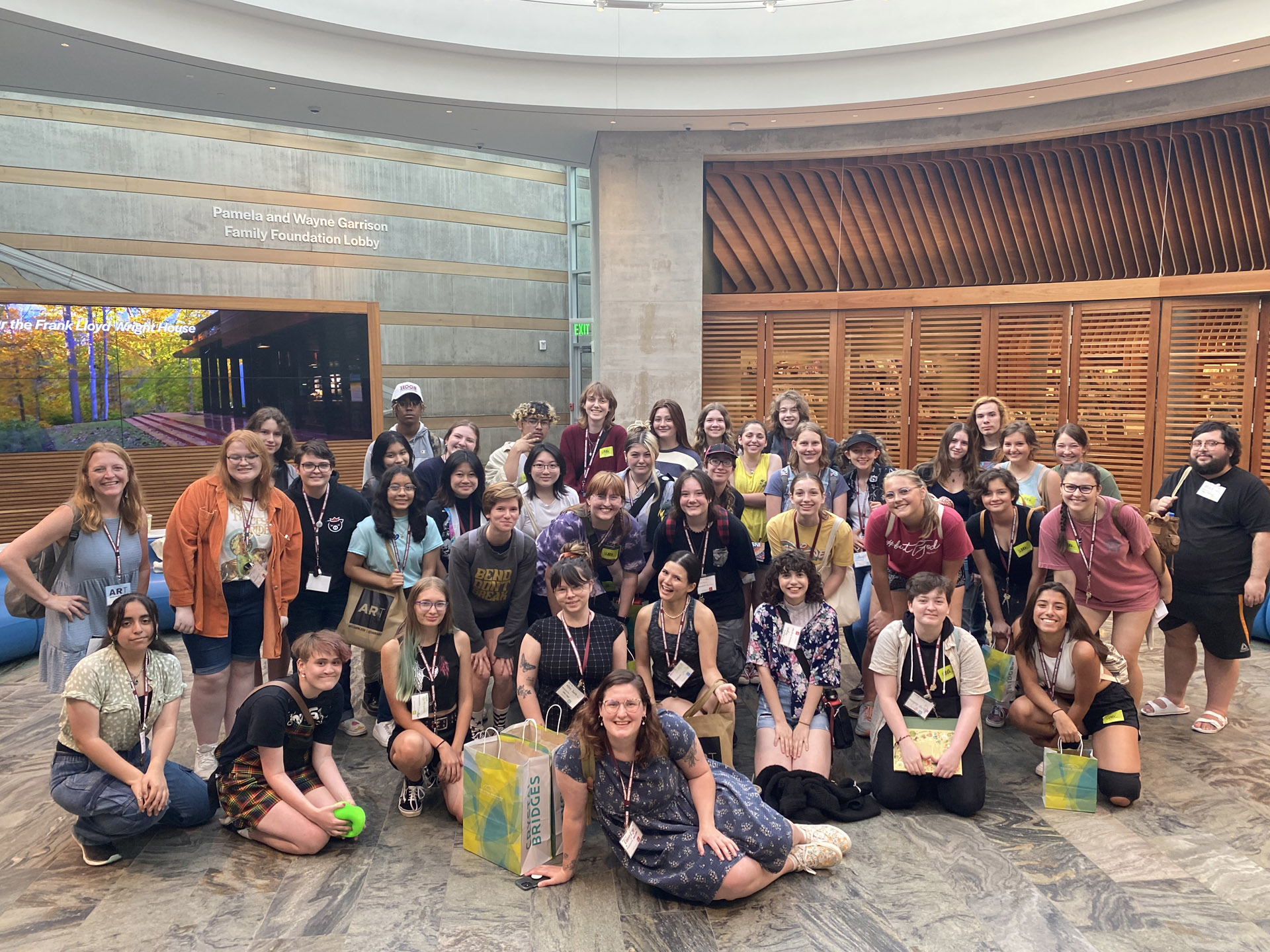
“I had no idea how much the School of Art was exploding and bursting at the seams with new opportunities,” she said. “The first time I was in college here, I was struggling to find where I belonged. My favorite part this time around has been finding the School of Art, because I feel like I found where I’m supposed to be and doing what I’m supposed to be doing.”
The State of Art
As art education flourishes at the U of A, a positive impact can be felt throughout the state, thanks to additional creative outlets and the economic benefit of a robust artist community. Art and design disciplines are infusing creative problem solvers into the workforce.
“We are graduating people who are prepared to help creatively solve problems in Arkansas,” Maxwell Lane said. “And I think that, in conjunction with the other efforts to continue building the area for the creative economy, we have the ability to keep those students here. We are opening up incredible career opportunities for students that just did not previously exist.”
One of the school’s many investments is a paid summer internship with Thrive Design in Helena, Arkansas, where graphic design students gain first-hand experience and help small businesses with design strategies and materials. The internship gives students the opportunity to live and work in a setting they might not otherwise experience.
Regan Lorfing and Marty Maxwell Lane share their experiences with Thrive.
“Thrive embodies the design work we teach our students and is making a positive impact in the Helena community,” Maxwell Lane said. “We are finding ways to expand our collaboration, not only to enhance our own students’ education, but to serve the people of Helena. It goes back to the principals of human-centered design, working with the community and agencies like Thrive, to problem solve, and ultimately creating more access to art and design.”
With the opening of the new facility and new programs being fine-tuned each semester, the initial “blank canvas” of the school is now turning into a vibrant depiction of what many hoped it would be in the future.

Photo courtesy of Novo Studio.
“Thinking about the significance of this building and all it offers, from state-of-the-art equipment to the vast space with room to grow... I think about how many high school students are going to see this and really think about the potential of a career and a life in art and design,” Maxwell Lane said. “I think that the visibility and access that it brings is substantial. I don’t think we’re going to know the full impact of this for probably a decade or more, but I imagine it will be significant.”